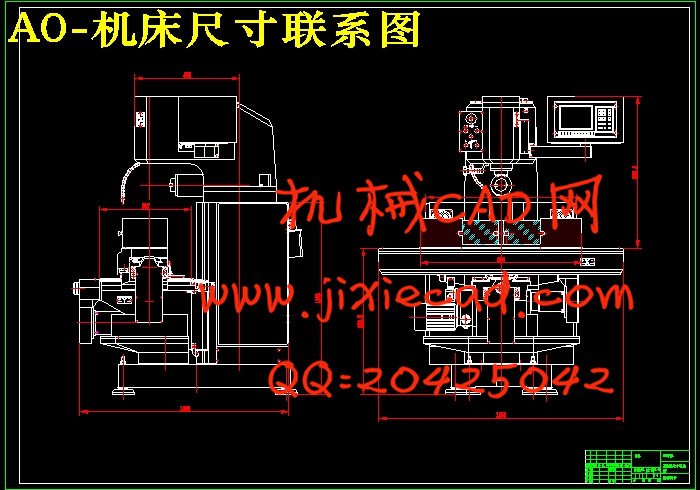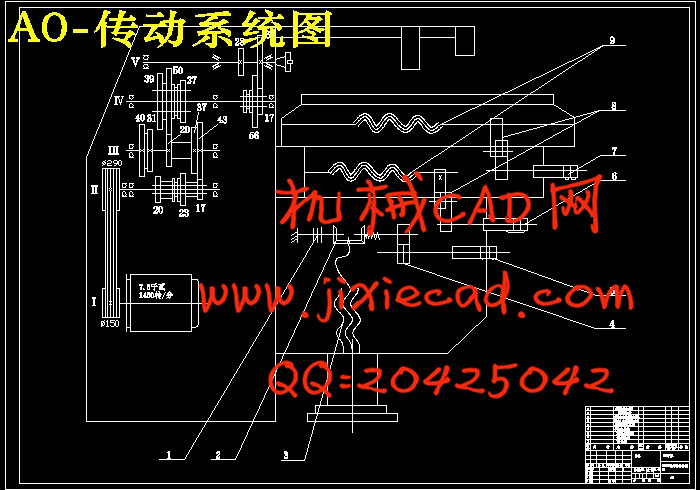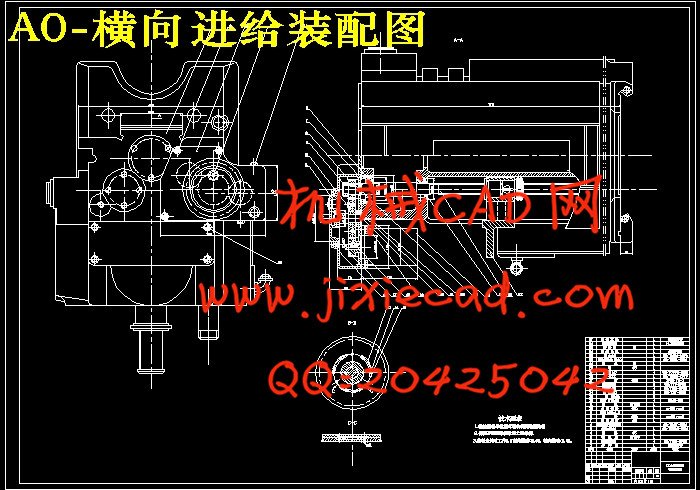设计简介
摘要
本论文是对XK6125数控铣床总体及横向进给传动机构设计,其内容包括:进给伺服系统机械部分设计与计算、步进电动机的计算与选型、铣床改造的结构特点、安装调整中应注意的问题等。对普通铣床进行数控改造符合我国国情,即适合我国目前的经济水平、教育水平和生产水平,又是国内许多企业提高生产设备自动化水平和精密程度的主要途径,在我国有着广阔的市场。从另一个角度来说,该设计既有机床结构方面内容,又有机加工方面内容,还有数控技术方面的内容,有利于将大学所学的知识进行综合运用。虽然设计者未曾系统的学习过机床设计的课程,但通过该设计拓宽了知识面,增强了实践能力,对普通机床和数控机床都有了进一步的了解。关键词:横向进给系统,数控化改造,机床改造,铣床
Abstract
The present paper is to XK6125 for feed system of NC transformation, its contents include: feed servo system of mechanical part design and calculation, and the calculation of the stepper motor selection, Miller structure characteristics, installation and adjustment should pay attention to the problem. On the common milling machine numerical control transformation in line with China's national conditions, that is suitable for China's current economic level, educational level and the level of production, but also many domestic enterprises to improve the level of automated production equipment and precision degree of the main way, has the broad market in our country. From another perspective, the design is a machine tool structure in terms of content, but also organic processing aspects, CNC technical content, the university knowledge to make comprehensive use of. Although the designers have not studied the machine design course, but through the design to broaden the knowledge, enhances the ability of practice, the general machine tools and CNC machine tools have a further understanding.KeyWords: horizontal feed system, NC transformation, transformation of machine tools, milling machine
目录
摘 要 IAbstract II
目录 III
第1章 数控机床发展概述 1
1.1数控机床发展概述 1
1.2数控机床的组成及分类 1
1.2.1数控机床的组成 1
1.2.2数控机床的分类 3
1.3数控机床的特点及应用范围 4
1.3.1数控机床的特点 4
1.3.2数控机床的应用范围 4
第2章 数控机床总体方案的制订及比较 5
2.1课题要求 5
2.1.1题目名称(包括主要技术参数)及技术要求 5
2.1.2课题内容及工作量 5
2.2设计原则 5
2.3总结构设计 6
2.3.1数控机床的机构设计要求 6
2.3.2提高机床的结构刚度 6
2.3.3提高进给运动的平稳性和精度 7
第3章 确定切削用量及选择刀具 8
3.1刀具选择 8
3.2切削用量确定 8
3.3切削三要素 9
3.4加工精度和表面粗糙度 9
3.5刀具材料 12
第4章 传动系统图的设计计算 13
4.1 传动系统设计 13
4.1.1 参数的拟定 13
4.1.2 传动结构或结构网的选择 13
4.1.3 转速图拟定 15
4.1.4 齿轮齿数的确定及传动系统图的绘制 18
4.2 传动件的估算与验算 22
4.2.1 传动轴的估算和验算 22
4.2.2 齿轮模数的估算与验算 24
4.3 展开图设计 29
4.3.1 结构实际的内容及技术要求 29
4.3.2 齿轮块的设计 31
4.3.3 传动轴设计 33
4.3.4 主轴组件设计 36
4.4 制动器设计 41
4.5 截面图设计 42
4.5.1 轴的空间布置 42
4.5.2 润滑 43
4.5.3 箱体设计的有关问题 44
第5章 横向进给传动机构装配图零件图的设计计算 45
5.1 进给伺服系统的设计 45
5.1.1 对进给伺服系统的基本要求 45
5.1.2进给伺服系统的设计要求 45
5.1.3进给伺服系统的动态响应特性及伺服性能分析 46
5.2 横向进给滚珠丝杠副设计 46
5.2.1 导程确定 46
5.2.2 确定丝杆的等效转速 46
5.2.3 估计工作台质量及负重 47
5.2.4 确定丝杆的等效负载 47
5.2.5 确定丝杆所受的最大动载荷 47
5.2.6 精度的选择 48
5.2.7 选择滚珠丝杆型号 49
5.3 校核 49
5.3.1 临界压缩负荷验证 49
5.3.2 临界转速验证 50
5.3.3 丝杆拉压振动与扭转振动的固有频率 51
5.4 电机的选择 51
5.4.1 电机轴的转动惯量 52
5.4.2 电机扭矩计算 52
总结与展望 54
参考文献 55
致 谢 56





